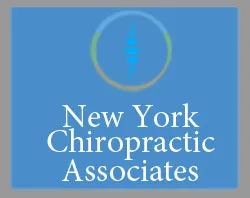- posted: Jul. 19, 2018
nATURAL WAYS TO LOWER BLOOD PRESSURE

Hypertension. High blood pressure. Call it what you will, but regardless, nobody wants it. Roughly one in every three adult Americans has it, and by the time they reach 60, more than half of all adult Americans will have joined the club.
In these days of managed care and overworked docs seeing patients at 15-minute intervals, when anyone shows up with a reading of 140/90 or higher, immediately, the pressure is on to get the numbers down as quickly as possible – and the quickest way is with medication. The good news (and it is news to your average internist) is that for many of us, a few simple nutritional and lifestyle tweaks will take care of the problem. That is fortunate, because hypertension medications, especially at higher doses, come with a raft of side-effects: frequent urination which can disrupt sleep, drowsiness, and in men, erectile difficulties.
So, if your numbers are heading north and you need to put on the brakes, here are a few excellent ways to do it. Even if you get with this program and still need the meds to bring blood pressure down, you should be able to reduce the dosages and the side effects. Let’s take a look at a the few of your options:
GET INTO MEDITATION
Not to sound like a broken record, but everyone should meditate. if you’re dogged by blood pressure problems, you need to. Meditation helps tame high BP naturally, almost instantly reducing stress levels, tamping down those “fight or flight” hormones that keep blood pressure way too high. The slow, regular breathing which occurs during meditation helps calm the entire nervous system, ultimately relaxing the whole body, including the blood vessels, thereby reducing blood pressure. Develop a practice now – it might be as easily do-able as 10-15 minutes a day – before the doc whips out the prescription pad.
GO LOW CARB
High blood pressure often goes hand in hand with chronic health problems like insulin resistance and high cholesterol. ( Metabolic Syndrome” is the term docs use when most of your important health measures fall in the “borderline troubled” range.) Traditionally, most docs will prescribe one drug for each ill and send you on your way. But for many people, those problems can be significantly reduced (or even eliminated) by switching to a low carb diet.Think of it as killing two (or more!) birds with one non-pharmaceutical stone. Even if you’re not yet diabetic, going low carb is still massively helpful for reducing blood pressure. Restricting carbs, especially sugar, is crucial for weight-loss, a bonus because the extra pounds are another driver of high blood pressure.
YOU’VE GOT TO MOVE IT
Cardiovascular exercise is essential to health for many reasons, but one of the biggies is the ability to lower blood pressure. Exercise strengthens the heart muscle, and a stronger heart is able to pump blood more efficiently, putting less strain on the vessels. By pushing the body with exercise, then allowing it to relax more deeply after a workout, the parasympathetic nervous system (the one in charge of relaxation) and the sympathetic (the one that’s responsible for keeping us alert) are brought into better balance, keeping blood pressure numbers in line.
TAP INTO NITRATES
Everybody knows that eating veggies is crucial for good health, but this especially true when it comes to taming blood pressure. The secret BP-cutting ingredient? Nitrates. Not to be confused with nitrites – the nasty carcinogenic stuff found in processed meats – the dietary nitrate found in virtually all veggies and fruit is a chemical compound that’s been shown to shown to reduce blood pressure, after the body converts it into nitric oxide. More nitric oxide means more relaxation or “dilation” of the blood vessels, which eases blood flow system-wide. That translates to lower blood pressure and less strain on the heart, which doesn’t have to work quite so hard to push the blood through the system.
GREEN UP YOUR PLATE
If it’s the nitrate motherload you’re after, go with arugula. Also known as rocket or roquette, a 4-oz. serving – preferably organic or locally grown – will deliver roughly 500 mgs of nitrates, so dig in to relax those vessels. According to the American Journal of Clinical Nutrition others high on the list (and try to make them organic) include:
· Celery, which averages about 250mg per 100g, or roughly 3.5 oz.
· Butter leaf lettuce clocks in at a respectable 200mg per 100g
· Oak leaf lettuce comes in at roughly 155mg per 100g
POP A BEET PILL OR POWDER
Beets, too, are high in nitrates, and can range from roughly 110 to 177mg nitrates per 100g But don’t try get it from beetroot juice: A cup of it comes in at about 22 grams of sugar! The best way of accessing nitrates from beets is in pill or powdered form. You’ll still get some sugar, but a lot less than the juice, about 3 grams for a teaspoon, and the convenience makes this an option worth considering. Compared to the beets on your plate, where the cooking process has reduced the amount of nitrates, pill and powdered can deliver more of the good stuff you’re after. When buying, look for organic, non-GMO versions made of 100% pure beetroot juice extract.
REST EASIER WITH MAGNESIUM.
If you’ve got hypertension, magnesium supplementation is a safe, low-cost, health-supporting therapy that virtually no internist will ever mention to you, mostly because they simply aren’t trained to ‘prescribe’ or even consider non-pharmaceutical options. If your numbers are in the borderline hypertensive zone, try 300-600 mg of magnesium per day, as this can often bring them back into the normal range, with no need for meds. For those with higher BP numbers, magnesium can be used in tandem with lower-dose prescription meds. Another bonus? Magnesium aids sleep and can relieve constipation.
